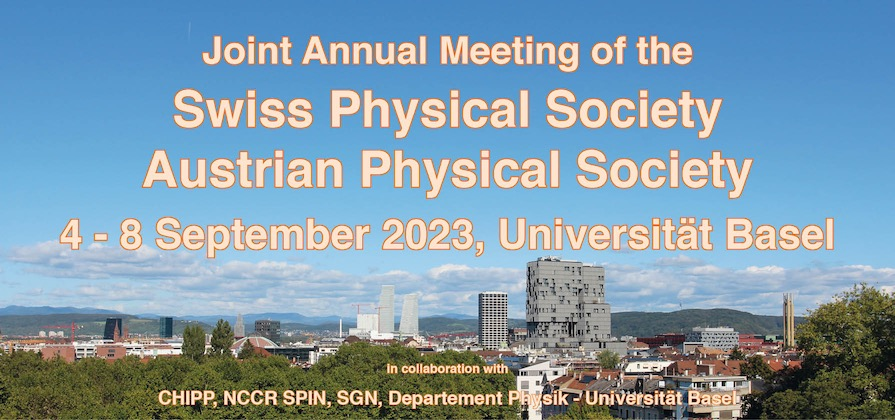Conveners
Accelerator Science and Technology
- Mike Seidel
The long-standing difficulty to handle the extreme e+ emittance and energy spread generated at converter targets has been a major limiting factor for future large e+ machine designs such as high-luminosity lepton colliders. The PSI Positron Production (P-cubed or P$^3$) experiment, framed in the FCC-ee study, is a demonstrator for a e+ capture system with potential to improve the...
In the context of accelerator-magnet technology to enable a next generation of HEP colliders, many superconducting magnet solutions are being considered. These solutions include Low-temperature, High-temperature and hybrid magnets. At the Paul Scherrer Institute (PSI), we have been working on the design of stress-managed magnets, for example the successfully tested CCT magnet CD1, as a means...
High-temperature superconductors (HTS) promise a significant increase in performance of accelerator magnets. This presentation examines challenges related to today’s ReBCO tape conductor and lays out an R&D roadmap towards a consistent magnet technology for the FCC-hh’s main dipole system in terms of cable- and coil configurations, cryogenic, mechanical, and protection concepts. Numerical...
High temperature superconductor (HTS) technology has attractive features for use in accelerator magnets. Two distinct benefits compared to low-temperature superconductors are the ability to operate at higher magnetic fields and/or at higher temperatures. We illustrate the advantages of HTS magnets by means of two potential use-cases for FCC-ee.
The first concerns a compact defect-tolerant...
The FCC-ee project takes a step forward towards the discovery of new physical phenomena beyond the frontier of the standard model,by aiming at unprecedented center of mass energies and luminosities in a double-ring lepton collider.In order to explore potential improvements to the current beam optics design,this work looks at the use of combined function magnets for the main dipoles and...
As colliders become more complex, it is crucial to consider physical phenomena in simulations including complex effects such as radiation, beam-beam, and impedance. However, existing simulation tools are often outdated or focus on single aspects. To address this, the CHART collaboration is developing a software framework integrating existing tools and actively contributing to new simulation...
The Vlasov approach models e-cloud driven instabilities on time scales beyond conventional Particle-In-Cell simulations. It uses a linear description of electron cloud forces that accounts for both the betatron tune modulation along the bunch and the dipolar kicks. Chromaticity effects can also be included. Benchmarked against macroparticle simulations using the same e-cloud force formalism,...
We introduce a method for computing Schottky spectra, which can be used for non-invasive beam diagnostics, from time-domain, macro-particle simulations. For LHC beam conditions the use of a standard Fast Fourier Transform (FFT) algorithm is computationally intractable memory-wise, hence a semi-analytical method was developed to efficiently handle the Fourier transform. Since Schottky spectra...
High precision experiments including the measurement of the muon g−2, muonium spectroscopy and muonium gravity would benefit from intense high-quality and low-energy muon beams.
At the Paul Scherrer Institute, the muCool device is being developed to compress the phase space of a standard μ+ beam by a factor of 10^9 with 10^−4 efficiency. This is achieved with a cryogenic helium gas cell and...
Carbon-ion therapy has advantages over X-rays, because of the Bragg peak, and proton therapy, because of radio-biology properties that allow treating radio-resistant tumours.
Accelerator development aims at size reduction: within EU-funded projects and CERN, we study a super-conducting synchrotron and a gantry, based on a concept of TERA Foundation. The super-conducting magnets, of CCT...
